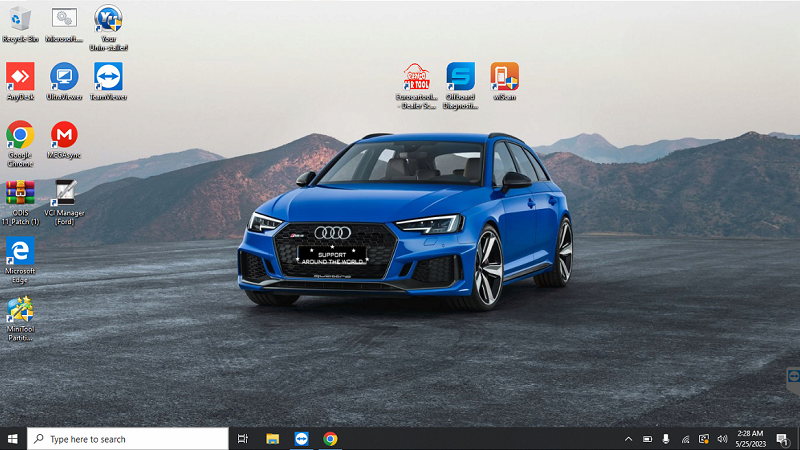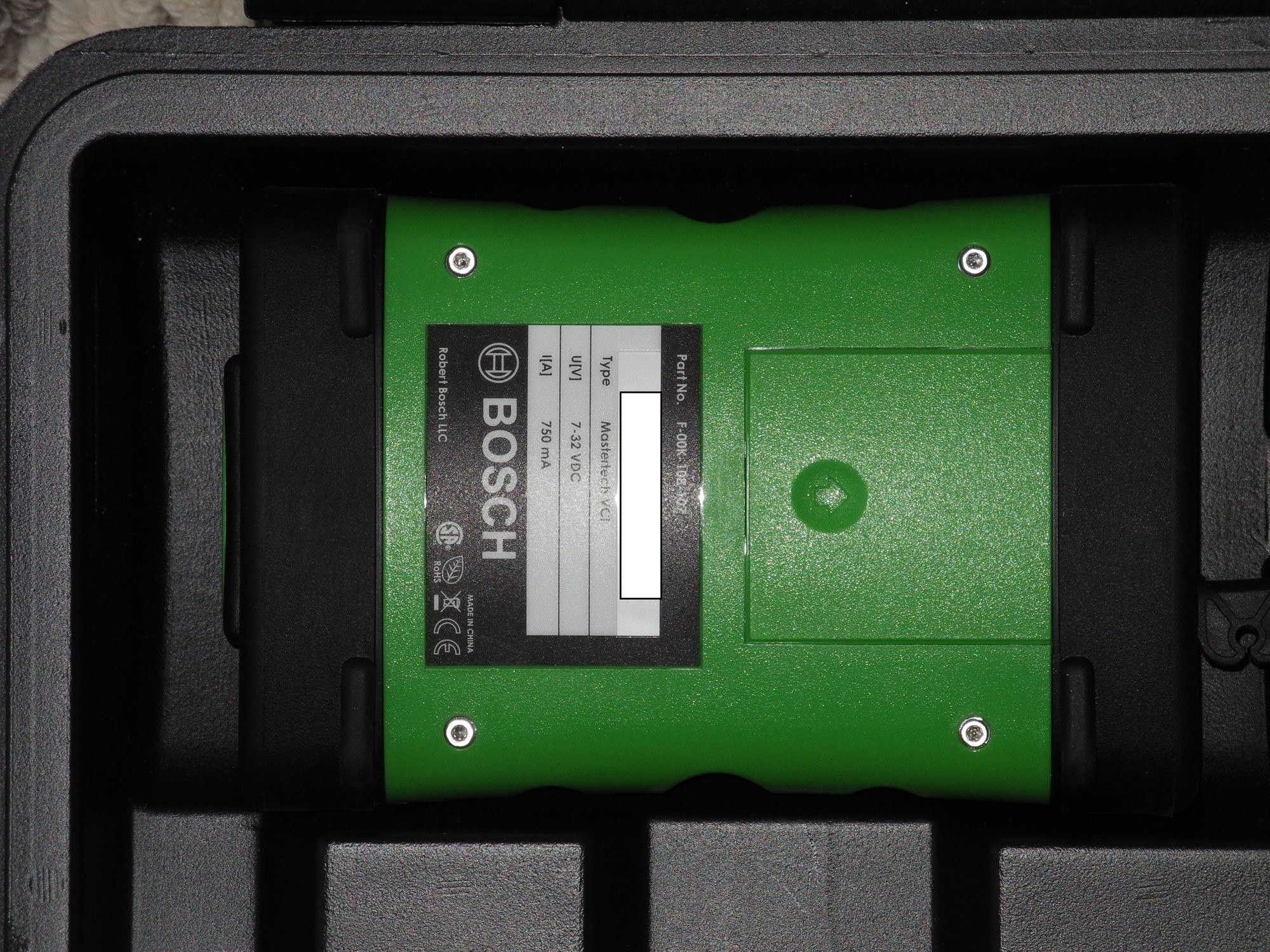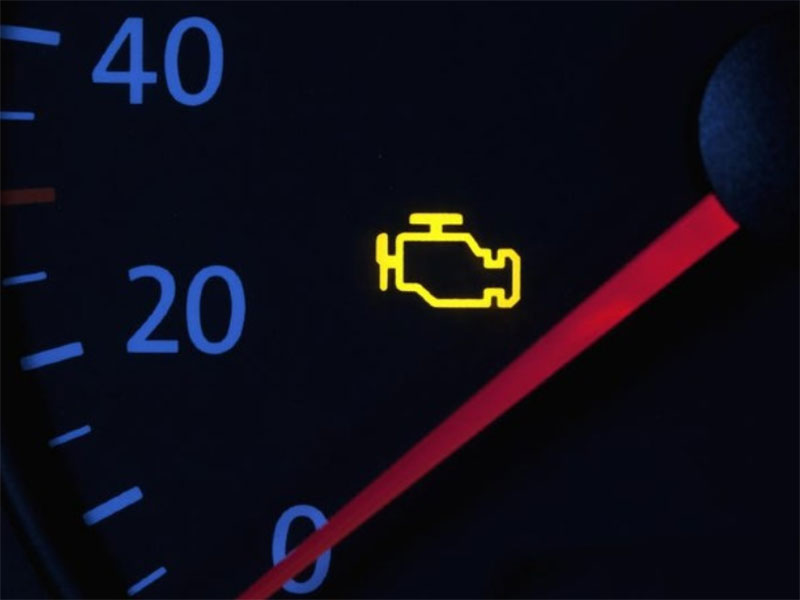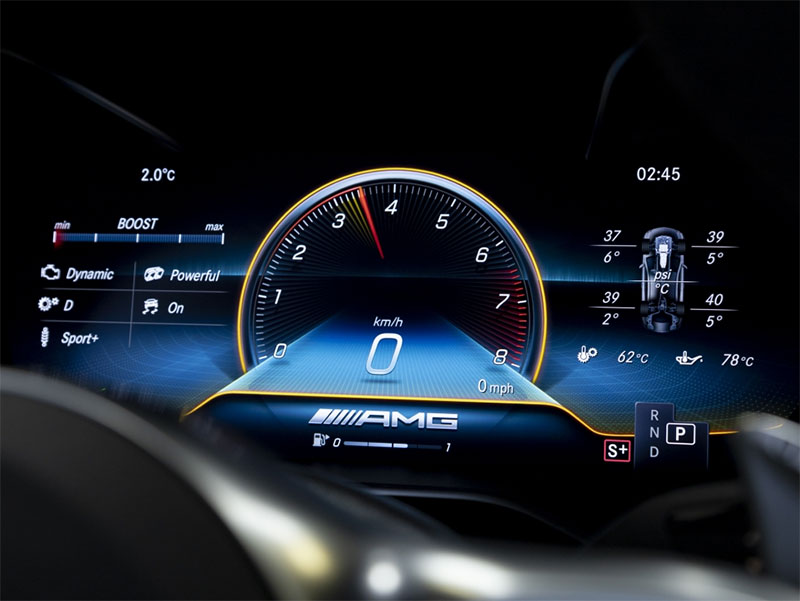How to Fix P0717 Mercedes Fault Code

1. How to Fix P0717 Mercedes Fault Code: Your Expert Guide
Encountering a P0717 fault code in your Mercedes can be a bit unsettling, but don’t worry, CARDIAGTECH.NET is here to guide you through understanding and resolving this issue with confidence. This comprehensive article will illuminate the causes, symptoms, and step-by-step solutions to get your prized Mercedes back to its smooth and reliable performance, empowering you with the knowledge and potentially the perfect tools from CARDIAGTECH.NET to tackle this challenge.
2. Decoding the Mercedes P0717 Trouble Code: Understanding the Basics
The P0717 diagnostic trouble code (DTC) for Mercedes-Benz vehicles indicates “Input/Turbine Speed Sensor Circuit No Signal.” This means your car’s engine control unit (ECU) or transmission control unit (TCU) is not receiving a proper signal from the input speed sensor, also known as the turbine speed sensor. This sensor plays a vital role in monitoring the rotational speed of the transmission’s input shaft. The data it provides is crucial for the TCU to make accurate decisions regarding gear shifts, torque converter lock-up, and overall transmission operation. When this signal is absent or erratic, it disrupts the harmonious communication within your vehicle’s powertrain system. Recognizing this fundamental aspect of the P0717 code is the first step toward effective diagnosis and repair.
2.1. The Critical Role of the Input/Turbine Speed Sensor
Imagine the input/turbine speed sensor as a vigilant messenger within your Mercedes transmission. Positioned to observe the speed of the input shaft, which is directly linked to the engine’s output, it relays this vital information to the TCU. This data stream allows the TCU to precisely coordinate gear changes, ensuring smooth acceleration and optimal fuel efficiency. Without a clear and consistent signal from this sensor, the TCU becomes essentially blind, unable to make informed decisions about the transmission’s behavior. This is why a P0717 code triggers noticeable drivability issues. Sources like the Mercedes-Benz official service manuals and reputable automotive diagnostic websites such as OBD-Codes.com provide in-depth explanations of sensor functions within the vehicle’s network.
2.2. What Triggers the Dreaded P0717 Code in Your Mercedes?
Several factors can lead to the illumination of the P0717 fault code on your Mercedes dashboard. Pinpointing the exact cause is essential for an effective and lasting repair. Here are the most common culprits:

- A Faulty Input/Turbine Speed Sensor: The sensor itself might have failed due to age, wear and tear, internal damage, or exposure to extreme temperatures. This is often the most direct cause of a “no signal” error.
- Wiring Issues: Problems within the wiring harness connecting the sensor to the TCU can disrupt the signal. This includes:
- Damaged or Broken Wires: Physical damage from road debris, accidents, or even rodents can sever the electrical connection.
- Corroded Connectors: Moisture and environmental factors can lead to corrosion on the sensor or TCU connectors, hindering proper electrical flow.
- Loose Connections: Vibrations and time can cause connectors to loosen, resulting in an intermittent or complete loss of signal.
- Transmission Control Unit (TCU) Malfunction: In rarer cases, the issue might lie within the TCU itself. If the input circuitry responsible for processing the sensor signal is faulty, it can lead to a P0717 code even if the sensor and wiring are intact.
- Low Transmission Fluid Level or Contaminated Fluid: While less directly related to the sensor’s electrical signal, extremely low or contaminated transmission fluid can sometimes cause erratic sensor readings or contribute to overall transmission issues that trigger the code.
- Electromagnetic Interference (EMI): Although less frequent, strong electromagnetic interference from nearby electrical components could potentially disrupt the delicate signal from the speed sensor.
Understanding these potential causes empowers you or your mechanic to approach the diagnostic process methodically. Automotive forums dedicated to Mercedes-Benz owners can also provide anecdotal evidence and shared experiences related to P0717 faults.
3. Recognizing the Signs: Symptoms of a Mercedes with a P0717 Code
When your Mercedes throws a P0717 code, it rarely goes unnoticed. The absence of a proper input speed sensor signal directly impacts the transmission’s ability to function correctly, leading to various noticeable symptoms. Being aware of these signs can help you identify the problem early and seek timely intervention:
- Transmission Won’t Shift Gears Properly: This is one of the most common and prominent symptoms. The transmission might get stuck in a single gear (often limp mode), refuse to shift up or down, or exhibit erratic and unpredictable gear changes.
- Limp Mode Activation: To protect itself from further damage, the transmission control unit might enter “limp mode.” This usually restricts the transmission to a limited gear range, often second or third gear, and significantly reduces engine power and vehicle speed.
- Check Engine Light Illumination: The malfunction indicator lamp (MIL), commonly known as the check engine light, will almost certainly illuminate on your dashboard to alert you to the detected fault.
- Harsh or Jerky Shifting: When the TCU doesn’t have accurate input speed information, it can lead to abrupt and uncomfortable gear changes.
- Loss of Power or Acceleration: The inability to shift gears smoothly and efficiently can result in a noticeable decrease in the vehicle’s power and acceleration capabilities.
- Increased Fuel Consumption: If the transmission is not operating in its optimal gear range, the engine might have to work harder, leading to reduced fuel economy.
- Speedometer Issues (Less Common): In some less frequent scenarios, a faulty input speed sensor might indirectly affect the speedometer reading, although this is more often associated with output speed sensor problems.
Experiencing any combination of these symptoms should prompt you to have your Mercedes diagnosed promptly. Ignoring a P0717 code can potentially lead to further damage to the transmission system.
4. Step-by-Step Guide: Diagnosing the P0717 Fault Code
Diagnosing a P0717 Mercedes fault code requires a systematic approach and, ideally, the use of appropriate diagnostic tools. Here’s a comprehensive step-by-step guide that automotive technicians and even well-informed vehicle owners can follow:
Step 1: Initial Scan and Code Verification
- Use an OBD-II scanner to confirm the presence of the P0717 code and check for any other related fault codes. Tools like the Autel MaxiCOM MK906BT or the Launch X431 V+ are popular choices among professionals, offering comprehensive Mercedes-Benz diagnostics. CARDIAGTECH.NET offers a range of these advanced diagnostic scanners to equip you with the necessary capabilities.
- Record all present fault codes as they might provide valuable context.
- Clear the fault codes and take the vehicle for a short test drive (if safe to do so) to see if the P0717 code reappears. This helps determine if the fault is intermittent or persistent.
Step 2: Visual Inspection
- Carefully inspect the wiring harness and connectors leading to the input/turbine speed sensor. Look for any signs of physical damage, such as cuts, abrasions, or melted insulation.
- Check the connectors for corrosion, loose pins, or any other signs of damage. Clean any corrosion with a specialized electrical contact cleaner.
- Ensure the sensor is securely mounted in its designated location. Refer to your Mercedes-Benz repair manual for the exact location of the input/turbine speed sensor for your specific model and transmission type.
Step 3: Sensor Testing (If Accessible)
- Resistance Test: If the sensor is accessible, you can perform a resistance test using a multimeter. Consult your Mercedes-Benz repair manual for the specified resistance range for your vehicle’s input speed sensor. Disconnect the sensor and measure the resistance across its terminals. An out-of-range reading indicates a faulty sensor.
- Signal Test (Oscilloscope): A more advanced test involves using an oscilloscope to observe the signal being generated by the sensor while the engine is running (with the vehicle safely secured and transmission in park or neutral). A healthy sensor should produce a consistent pulse signal. The absence or irregularity of this signal suggests a sensor malfunction.
Step 4: Wiring Harness and Connector Testing
- Continuity Test: Use a multimeter to perform continuity tests on the wires connecting the sensor to the TCU. Disconnect both ends of the circuit (sensor and TCU connectors) and check for continuity. An open circuit (no continuity) indicates a break in the wire.
- Voltage Test: With the ignition on (but engine off, unless specified otherwise in the service manual), check for the presence of the correct voltage at the sensor connector. Refer to the wiring diagram for your vehicle to identify the power and ground circuits.
- Ground Test: Ensure the ground wire for the sensor has a good connection to the vehicle’s chassis ground. A high resistance reading indicates a poor ground connection.
Step 5: Transmission Fluid Check
- Inspect the transmission fluid level. Low fluid can sometimes indirectly cause sensor issues.
- Check the condition of the transmission fluid. Look for signs of contamination, such as a burnt smell or the presence of metal shavings. If the fluid is low or contaminated, address these issues before proceeding further with sensor or TCU diagnosis. Refer to your owner’s manual or repair manual for the correct procedure for checking and filling the transmission fluid.
Step 6: TCU Testing (Proceed with Caution)
- Testing the TCU typically requires specialized equipment and expertise. If you have ruled out the sensor, wiring, and fluid issues, the TCU might be the culprit.
- Visual inspection of the TCU and its connectors for any signs of damage or corrosion is a good first step.
- Advanced diagnostic scanners can often perform specific TCU tests and read live data related to the input speed sensor.
Step 7: Utilizing Diagnostic Tools from CARDIAGTECH.NET
- CARDIAGTECH.NET offers a wide array of professional-grade diagnostic tools that can significantly simplify the diagnosis of a P0717 code. Scanners with Mercedes-Benz specific software can provide detailed fault code information, live data streams from the input speed sensor, and even guide you through specific diagnostic procedures. Investing in a quality scanner can save you considerable time and effort in the long run. Consider models like the Thinktool Master X or the TOPDON Phoenix Elite for their advanced capabilities.
Step 8: Refer to Repair Manuals and Technical Resources
- Always consult the official Mercedes-Benz repair manual for your specific vehicle model and year. These manuals contain detailed wiring diagrams, component locations, testing procedures, and torque specifications, which are crucial for accurate diagnosis and repair. Online databases like ALLDATA and Mitchell 1 also provide valuable technical information.
By following these steps methodically, you can effectively diagnose the root cause of the P0717 Mercedes fault code. Remember to prioritize safety during all diagnostic procedures and consider seeking professional help if you are not comfortable performing certain tests.
5. Resolving the Issue: How to Fix the P0717 Mercedes Fault Code
Once you have accurately diagnosed the cause of the P0717 fault code, the next step is to implement the necessary repairs. Here are the common fixes, ranging from simple to more complex:
1. Replacing the Faulty Input/Turbine Speed Sensor:
- If the diagnostic tests indicate a faulty sensor, replacement is the most likely solution.
- Procedure:
- Locate the input/turbine speed sensor (refer to your repair manual).
- Disconnect the electrical connector.
- Remove the retaining bolt or clip securing the sensor.
- Carefully remove the old sensor.
- Install the new sensor, ensuring it is properly seated.
- Secure the sensor with the retaining bolt or clip to the specified torque (if applicable).
- Reconnect the electrical connector.
- Parts: Obtain a genuine or high-quality aftermarket input/turbine speed sensor that is specifically designed for your Mercedes-Benz model and transmission type. CARDIAGTECH.NET can be a valuable resource for sourcing reliable automotive parts.
2. Repairing or Replacing Damaged Wiring:
- If the issue lies within the wiring harness, the solution will involve repairing or replacing the affected wires or connectors.
- Procedure:
- Damaged Wires: Repair any broken or damaged wires by soldering them together and insulating them properly with heat-shrink tubing. Ensure a strong and secure connection.
- Corroded Connectors: Clean corroded connector pins with electrical contact cleaner. If the corrosion is severe, the connector might need to be replaced. Ensure you use the correct type of connector and follow proper wiring diagrams.
- Loose Connections: Secure any loose connectors. In some cases, you might need to replace the connector if the locking mechanism is damaged.
- Tools and Materials: You will need tools such as a wire stripper, soldering iron, solder, heat gun, heat-shrink tubing, and potentially new connectors and wiring.
3. Addressing TCU Issues:
- If the TCU is diagnosed as the problem, the repair options can range from reprogramming to complete replacement.
- Reprogramming: In some cases, a software update or reprogramming of the TCU might resolve the issue, especially if it’s related to a software glitch. This typically requires specialized diagnostic equipment and software available at Mercedes-Benz dealerships or reputable independent repair shops.
- TCU Replacement: If the TCU has internal hardware failure, it will likely need to be replaced with a new or remanufactured unit. After replacement, the new TCU will need to be programmed to your specific vehicle. This is a complex procedure that should generally be performed by experienced technicians.
4. Correcting Transmission Fluid Levels and Condition:
- If low or contaminated transmission fluid is identified as a contributing factor, addressing this is crucial.
- Procedure:
- Low Fluid: Top up the transmission fluid to the correct level using the recommended type of fluid for your Mercedes-Benz.
- Contaminated Fluid: Perform a complete transmission fluid and filter change, following the manufacturer’s recommended procedure. Ensure you use the correct type and quantity of fluid.
5. Clearing the P0717 Code:
- After completing the necessary repairs, use an OBD-II scanner to clear the P0717 fault code from the vehicle’s computer.
- Take the vehicle for a test drive to ensure the code does not reappear and that the transmission is functioning correctly.
Important Considerations:
- Always refer to your Mercedes-Benz repair manual for specific repair procedures, torque specifications, and wiring diagrams for your vehicle model and year.
- When replacing sensors or other electronic components, ensure you are using high-quality parts that meet or exceed OEM specifications. CARDIAGTECH.NET can assist you in finding the right components for your needs.
- If you are not experienced in automotive repair, it is always recommended to seek the assistance of a qualified and experienced mechanic to ensure the repairs are performed correctly and safely.
6. Cost Considerations: Budgeting for Your Mercedes P0717 Repair
The cost to fix a P0717 Mercedes fault code can vary significantly depending on the underlying cause of the problem, the specific Mercedes-Benz model, and whether you choose to have the repair done at a dealership, an independent repair shop, or if you tackle it yourself. Here’s a breakdown of potential costs:
1. Input/Turbine Speed Sensor Replacement:
- Part Cost: The cost of a new input/turbine speed sensor can range from $50 to $200 or more, depending on the brand and supplier.
- Labor Cost (if professionally done): Labor costs can vary but typically range from $100 to $300, depending on the sensor’s location and accessibility.
- Total Estimated Cost: $150 to $500.
2. Wiring Repair:
- Part Cost: Wiring repairs themselves might not involve significant part costs (e.g., wires, connectors, solder, heat-shrink tubing might cost $20 to $50).
- Labor Cost (if professionally done): Diagnosing and repairing wiring issues can be time-consuming, and labor costs could range from $100 to $400 or more, depending on the complexity of the problem.
- Total Estimated Cost: $20 to $450+.
3. TCU Repair or Replacement:
- Repair Cost (if possible): If the TCU can be repaired (e.g., reprogramming), costs might range from $150 to $400.
- Replacement Cost (Part Only): A new or remanufactured TCU can cost anywhere from $500 to $2000 or more.
- Labor Cost (if professionally done): TCU replacement and programming can involve significant labor, potentially ranging from $200 to $600.
- Total Estimated Cost: $700 to $2600+.
4. Transmission Fluid Service:
- Fluid and Filter Cost: The cost of transmission fluid and a new filter can range from $100 to $300, depending on the type of fluid required for your Mercedes-Benz.
- Labor Cost (if professionally done): A transmission fluid and filter change typically involves $80 to $200 in labor.
- Total Estimated Cost: $180 to $500.
DIY vs. Professional Repair:
- DIY: If you have the mechanical skills and the necessary diagnostic tools (like those available at CARDIAGTECH.NET), you can save on labor costs by performing the repairs yourself. However, ensure you have access to accurate repair information and proceed with caution.
- Professional Repair: Choosing a reputable independent repair shop specializing in European vehicles or a Mercedes-Benz dealership will likely result in higher labor costs but offers the expertise and specialized equipment needed for complex repairs like TCU issues.
Investing in Diagnostic Tools from CARDIAGTECH.NET:
While initially an investment, purchasing your own professional-grade diagnostic scanner from CARDIAGTECH.NET can save you money in the long run by allowing you to accurately diagnose issues like the P0717 code yourself, potentially avoiding costly diagnostic fees at repair shops. Furthermore, these tools can be used for ongoing maintenance and troubleshooting of various vehicle systems.
Getting Estimates:
It’s always a good practice to get estimates from several different repair shops before committing to any repairs. This will give you a better understanding of the prevailing labor rates and part costs in your area.
7. Maintaining Your Mercedes: Preventing Future Transmission Issues
While dealing with a P0717 code can be frustrating, proactive maintenance can significantly reduce the risk of future transmission problems and ensure the longevity and smooth operation of your Mercedes-Benz. Here are some key maintenance practices to follow:
- Regular Transmission Fluid Changes: Adhere to the manufacturer’s recommended service intervals for transmission fluid and filter changes. Using the correct type of transmission fluid is crucial for optimal performance and preventing wear and tear.
- Monitor Transmission Fluid Level and Condition: Periodically check the transmission fluid level and inspect its condition. Low fluid levels or discolored/burnt-smelling fluid can indicate leaks or internal issues that need to be addressed promptly.
- Address Any Transmission Leaks Immediately: If you notice any signs of transmission fluid leaks, have them inspected and repaired by a qualified mechanic without delay. Leaks can lead to low fluid levels and potential transmission damage.
- Avoid Harsh Driving Habits: Aggressive acceleration, hard braking, and frequent gear changes under high load can put excessive strain on the transmission system. Smooth and controlled driving habits can help prolong its lifespan.
- Ensure Proper Cooling System Maintenance: The transmission cooler relies on the engine’s cooling system to maintain optimal operating temperatures. Ensure your engine’s cooling system is functioning correctly by regularly checking coolant levels and having the system flushed and refilled as recommended.
- Promptly Address Any Unusual Transmission Behavior: If you notice any unusual noises, slipping, or rough shifting from your transmission, have it inspected by a mechanic as soon as possible. Early detection of problems can prevent more extensive and costly repairs down the line.
- Utilize Quality Diagnostic Tools for Regular Checks: Consider investing in a diagnostic scanner from CARDIAGTECH.NET to periodically check your Mercedes-Benz for any pending or active fault codes. Early detection of minor issues can prevent them from escalating into major problems.
By incorporating these preventative maintenance practices into your regular vehicle care routine, you can significantly reduce the likelihood of encountering transmission issues like the P0717 fault code and keep your Mercedes-Benz performing at its best for years to come.
8. Why Choose CARDIAGTECH.NET for Your Diagnostic Needs?
At CARDIAGTECH.NET, we understand the passion and dedication Mercedes-Benz owners have for their vehicles. That’s why we offer a comprehensive selection of high-quality automotive diagnostic tools and equipment designed to empower both professional technicians and discerning vehicle owners like you. When facing issues like the P0717 fault code, having the right tools can make all the difference in efficient diagnosis and effective repair.
Here are just a few compelling reasons to choose CARDIAGTECH.NET:
- Extensive Range of Diagnostic Scanners: We offer a wide variety of OBD-II scanners, from entry-level models for basic code reading to advanced professional-grade tools with comprehensive Mercedes-Benz specific software, including bi-directional controls, coding, and programming capabilities. Whether you’re a young auto mechanic just starting out or an experienced garage owner, we have the perfect scanner to meet your needs and budget.
- Top Brands You Can Trust: We partner with leading manufacturers in the automotive diagnostic industry, such as Autel, Launch, TOPDON, and Thinkcar, ensuring you have access to reliable, accurate, and feature-rich tools.
- Competitive Pricing: We strive to offer our diagnostic tools at competitive prices, providing exceptional value for your investment. We understand the financial considerations of both independent mechanics and garage owners.
- Expert Support and Guidance: Our knowledgeable team is dedicated to providing excellent customer support. We can help you choose the right diagnostic tool for your specific Mercedes-Benz models and your level of expertise. Don’t hesitate to reach out with any questions you may have.
- Up-to-Date Technology: The automotive industry is constantly evolving, and we ensure our product offerings include the latest diagnostic technologies and software updates to keep you ahead of the curve.
- Enhance Your Garage Efficiency and Profitability: For garage owners and managers, investing in advanced diagnostic tools from CARDIAGTECH.NET can significantly improve your shop’s efficiency, reduce diagnostic time, and ultimately increase profitability. Accurate diagnoses lead to faster repairs and happier customers.
- Empower DIY Enthusiasts: For Mercedes-Benz owners who prefer to handle their own maintenance and repairs, our user-friendly diagnostic tools provide the information and capabilities you need to confidently tackle issues like the P0717 code in your own garage.
Don’t let the P0717 fault code keep your Mercedes-Benz off the road. Equip yourself with the power of accurate diagnostics from CARDIAGTECH.NET and regain control over your vehicle’s health.
Ready to take the next step? Contact our expert team at CARDIAGTECH.NET today to discuss your diagnostic tool needs. Call us at +1 (641) 206-8880 or visit our website CARDIAGTECH.NET to explore our extensive selection. Our address is 276 Reock St, City of Orange, NJ 07050, United States. Let us help you find the perfect tools to keep your Mercedes-Benz running smoothly and efficiently.
Take action now and experience the CARDIAGTECH.NET difference. Invest in quality, invest in confidence, invest in the future of your Mercedes-Benz maintenance.




![How to Fix U0302 Error on VW Jetta 2015 [Software Incompatibility with Transmission Control Module Warning]](https://cardiagtech.my/wp-content/uploads/2024/12/how-to-fix-u0302-error-on-vw-jetta-2015.jpg)





